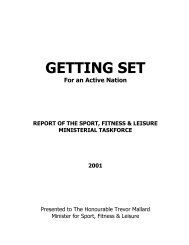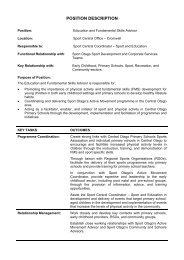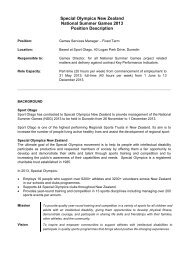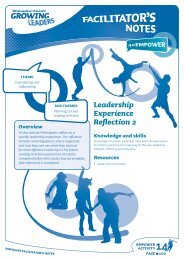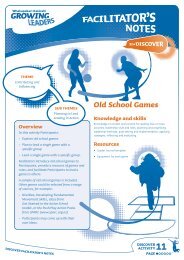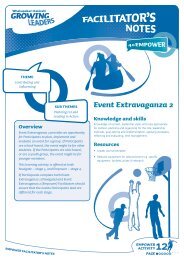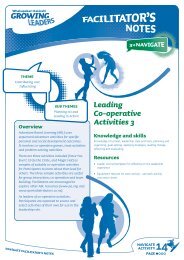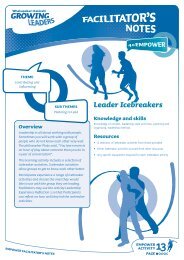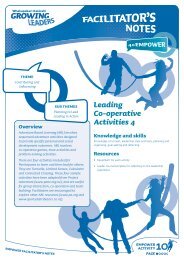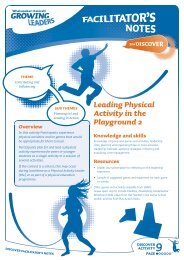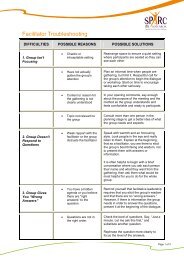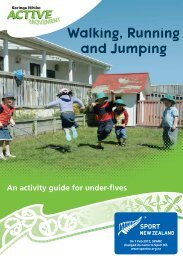An Overview - Sport New Zealand
An Overview - Sport New Zealand
An Overview - Sport New Zealand
Create successful ePaper yourself
Turn your PDF publications into a flip-book with our unique Google optimized e-Paper software.
THE VALUE OF SPORT<br />
21<br />
Calculating personal benefits<br />
<strong>An</strong>other way to estimate benefits enjoyed by sport and recreation<br />
participants is to consider the value that must be added to a person’s quality<br />
of life from participating in their chosen activities. People must ‘value’ sport<br />
and recreation sufficiently to justify the time they spend taking part in these<br />
activities, rather than other activities. This is illustrated in Figure 7 (which<br />
can be compared with Figure 1 earlier in the report). To justify participation,<br />
personal benefits (column 1) must be greater than total costs (column 2).<br />
The costs include actual payments for equipment, clothing, club fees, and<br />
so on, plus the value of the person’s time spent participating (time costs).<br />
The actual payments are revenue to industries in the economy, so that the<br />
‘value added’ in this context can be defined as personal benefits minus<br />
these payments (column 3). As the diagram shows, the value added must be<br />
greater than the time costs, otherwise people would not take part in sport<br />
and recreation.<br />
The time people spend<br />
taking part in sport<br />
and recreation can be<br />
valued in dollar terms<br />
– these are the nonmarket<br />
benefits<br />
The next step is to value the time spent in sport and recreation. This study<br />
has included the hours spent as an active participant, as a volunteer and as<br />
an adult watching young people play organised sport. Time spent in these<br />
activities could have been used to earn income. The fact that the person<br />
did not make that choice, but chose instead to participate in sport and<br />
recreation, indicates that the person obtains more value from the sport<br />
and recreation than would have been obtained from further employment.<br />
In order to adopt a conservative approach, the statutory minimum wage<br />
($12.75 per hour) is used to value this time, even though most people are<br />
able to earn a higher hourly rate than this figure. 1<br />
Figure 7<br />
Personal benefits and costs of participation<br />
TIME<br />
COSTS<br />
VALUE<br />
ADDED<br />
PERSONAL<br />
BENEFITS<br />
ACTUAL<br />
PAYMENTS<br />
ACTUAL<br />
PAYMENTS<br />
1<br />
This approach is known as revealed preference and is used by economists to value what<br />
is referred to as the opportunity cost of time spent taking part in activities that do not<br />
have a direct market value like paid employment.



